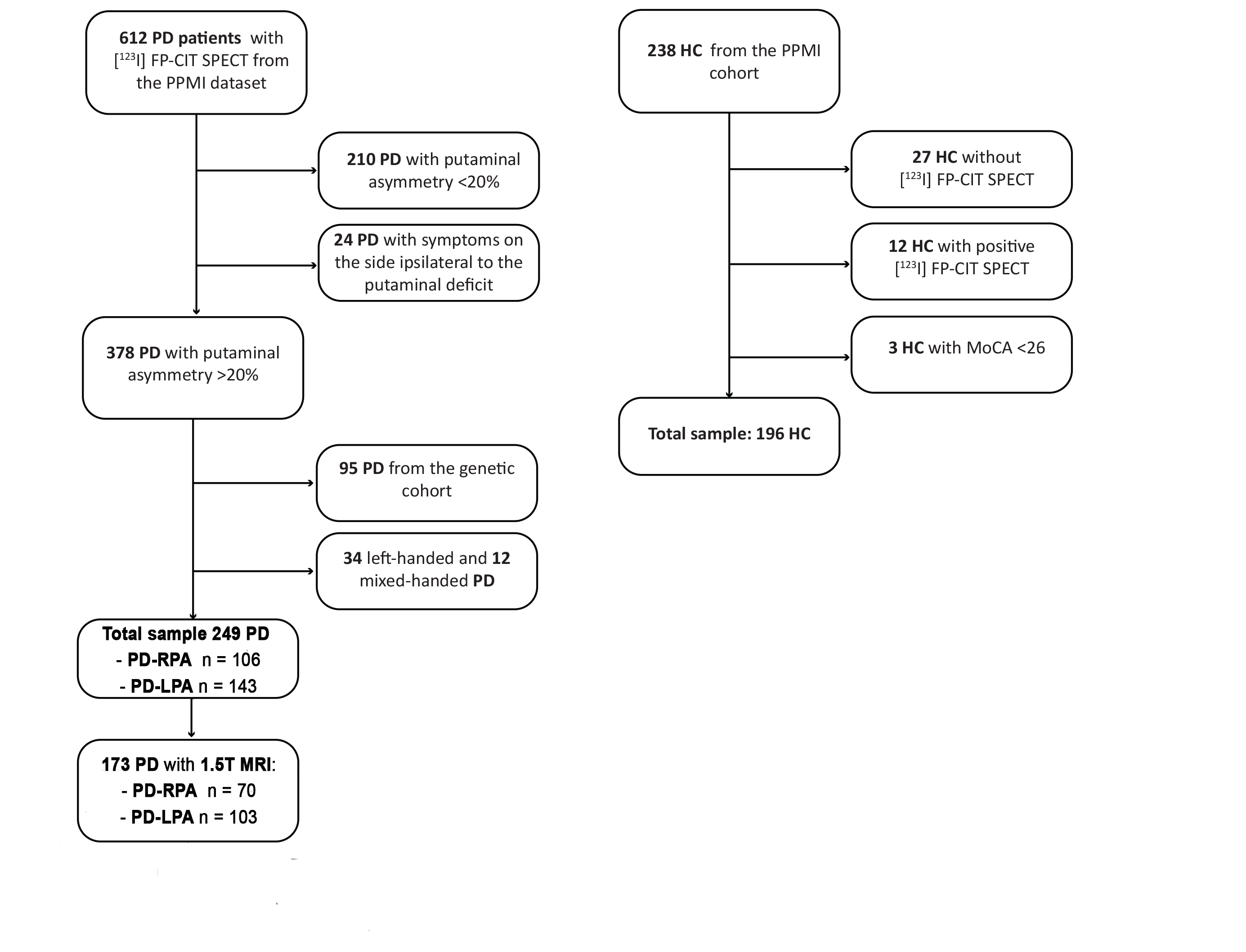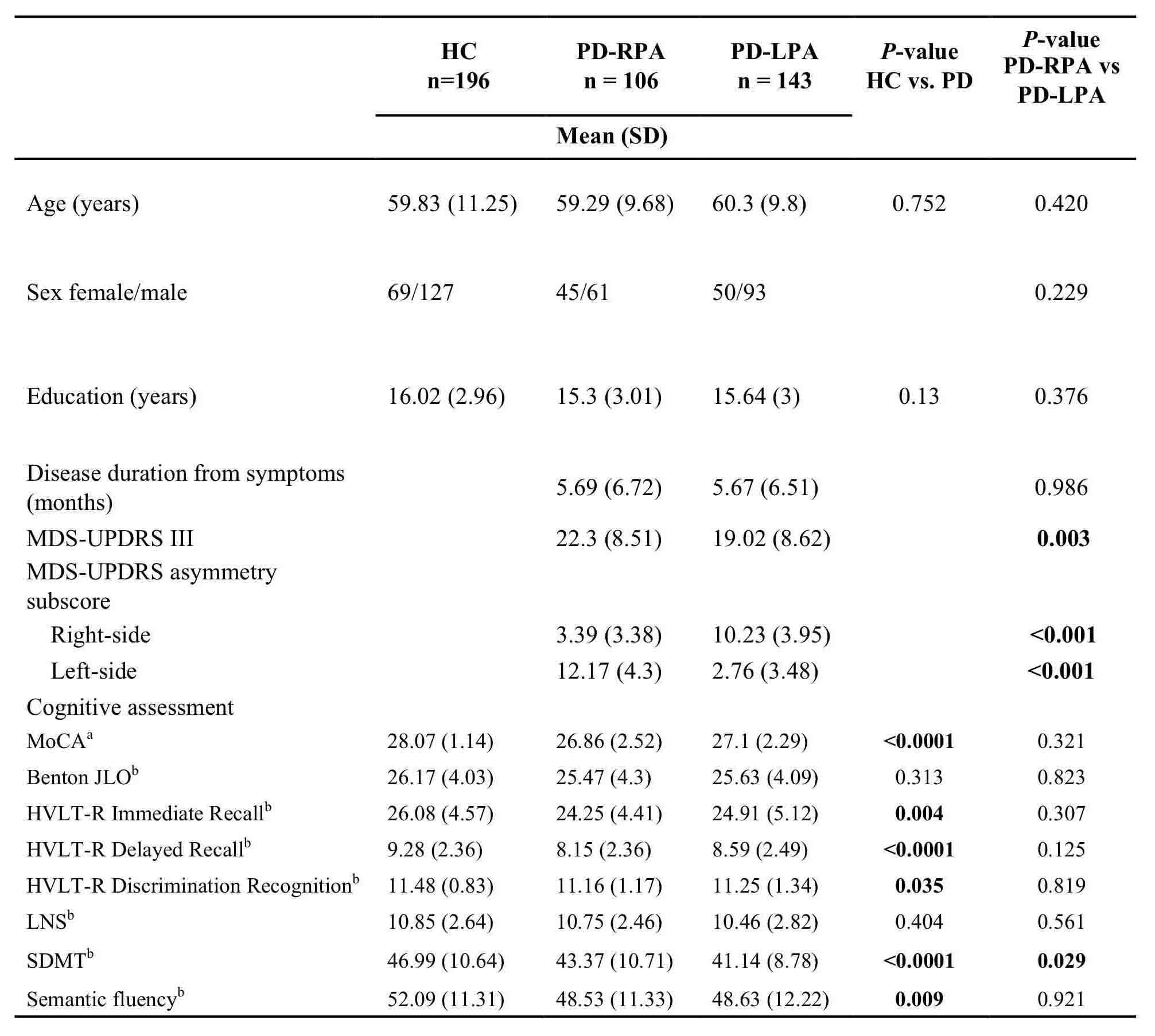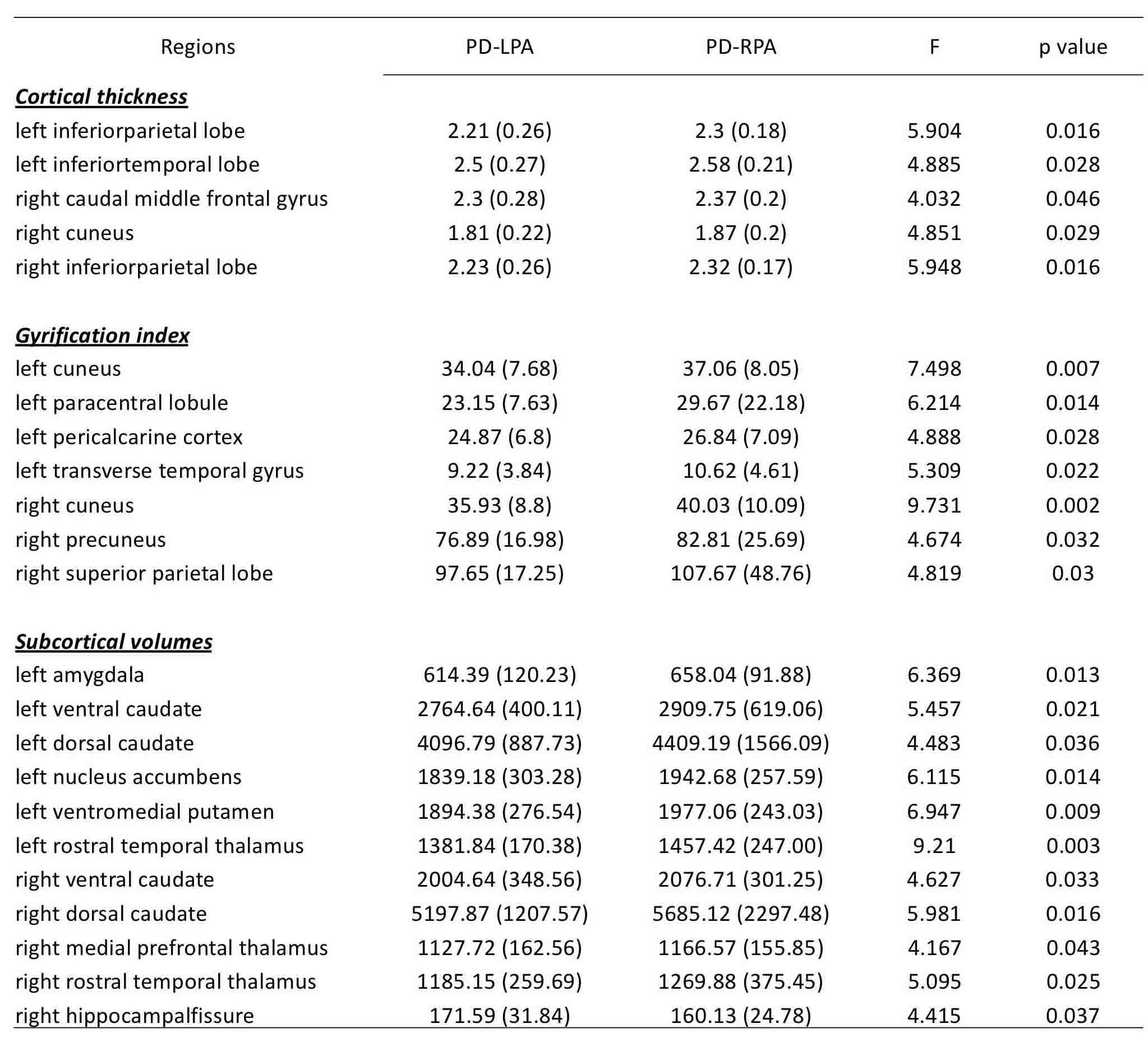Category: Parkinson's Disease: Cognitive functions
Objective: To characterize the impact of asymmetric dopaminergic degeneration, measured with I123-ioflupane SPECT (DATSCAN), on cortical integrity and cognitive deficits, in de-novo right-handed PD patients.
Background: PD is characterized by asymmetric motor onset that is linked to asymmetric nigro-striatal dopaminergic dysfunction. However, if right or left asymmetry contributes differently to cognitive performance and the extent of the neuroanatomical changes associated with asymmetry remain still controversial [1,2].
Method: From the PPMI cohort, among 612 de-novo PD and 238 HC who had DATSCAN, we have identified 249 right-handed PD, with left (n=106) vs. right (n=143) putaminal asymmetry index >20 % at baseline [3] (PD-LPA vs. PD-RPA, respectively) and 196 HC with negative DATSCAN and MoCA>26 [figure1]. Clinical, neuropsychological and neuroimaging data were analyzed in PD and HC subgroups. Cortical thickness, cortical folding and subcortical volumes were extracted.
Results: No significant differences were found between asymmetric PD vs. HC, but PD showed poorer cognitive performance in MoCA, HVLT, SDMT and semantic fluency task. PD-RPA showed significant higher MDS-UPDRS-III scores (p=0.003), while PD-LPA showed a poor performance in SDMT task (p=0.029) [table1].
PD-LPA showed a significant cortical thinning, gyrification reduction and subcortical volume loss compared to PD-RPA [table2]. Multifactorial ANOVA revealed an interaction effect between left putaminal asymmetry onset, SDMT low performance and neuroanatomical alterations (reduced gyrification in the paracentral and temporal lobe and volume loss in the right caudate and left putamen).
Conclusion: We found that side of PD onset may differently affect cognition in PD. Namely, PD-LPA seems to be linked with processing-speed difficulties and neuroanatomical alterations in de-novo PD. Of note, these anatomical changes were mainly located in the left dominant hemisphere, observed to be vulnerable in early PD [4], and thus possibly contributing to high level cognitive dysfunctions.
Prospective longitudinal studies need to clarify if the co-presence of left cortical alterations together with ipsilateral putaminal degeneration may represent a vulnerable phenotype for cognitive decline in PD.
References: 1. Scherfler C, Seppi K, Mair KJ, Donnemiller E, Virgolini I, Wenning GK, et al. Left hemispheric predominance of nigrostriatal dysfunction in Parkinson’s disease. Brain. 2012;135(11):3348–54. 2. Verreyt N, Nys GMS, Santens P, Vingerhoets G. Cognitive differences between patients with left-sided and right-sided Parkinson’s disease. A review. Neuropsychol Rev. 2011;21(4):405–24. 3. Zijlmans J, Evans A, Fontes F, Katzenschlager R, Gacinovic S, Lees AJ, et al. [123I] FP-CIT spect study in vascular parkinsonism and Parkinson’s disease. Mov Disord. 2007;22(9):1278–85. 4. Claassen DO, McDonell KE, Donahue M, Rawal S, Wylie SA, Neimat JS, et al. Cortical asymmetry in Parkinson’s disease: early susceptibility of the left hemisphere. Brain Behav. 2016;6(12):e00573.
To cite this abstract in AMA style:
E. Fiorenzato, A. Antonini, W. Weis, P. Bisiacchi, C. Semenza, A. Vallesi, R. Biundo. The interplay between asymmetric dopaminergic degeneration, brain structural changes and cognition in de-novo PD: The PPMI dataset [abstract]. Mov Disord. 2020; 35 (suppl 1). https://www.mdsabstracts.org/abstract/the-interplay-between-asymmetric-dopaminergic-degeneration-brain-structural-changes-and-cognition-in-de-novo-pd-the-ppmi-dataset/. Accessed December 27, 2025.« Back to MDS Virtual Congress 2020
MDS Abstracts - https://www.mdsabstracts.org/abstract/the-interplay-between-asymmetric-dopaminergic-degeneration-brain-structural-changes-and-cognition-in-de-novo-pd-the-ppmi-dataset/



